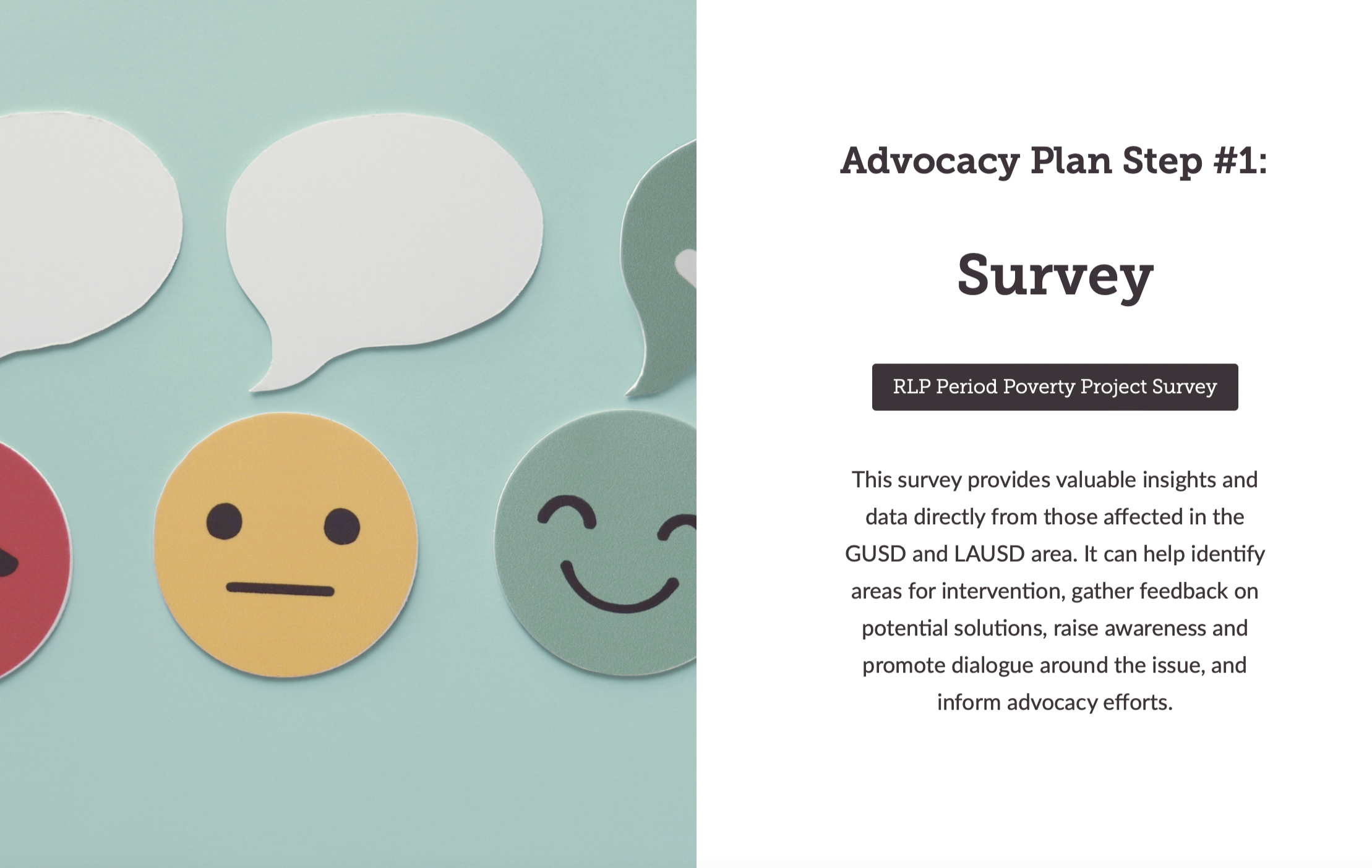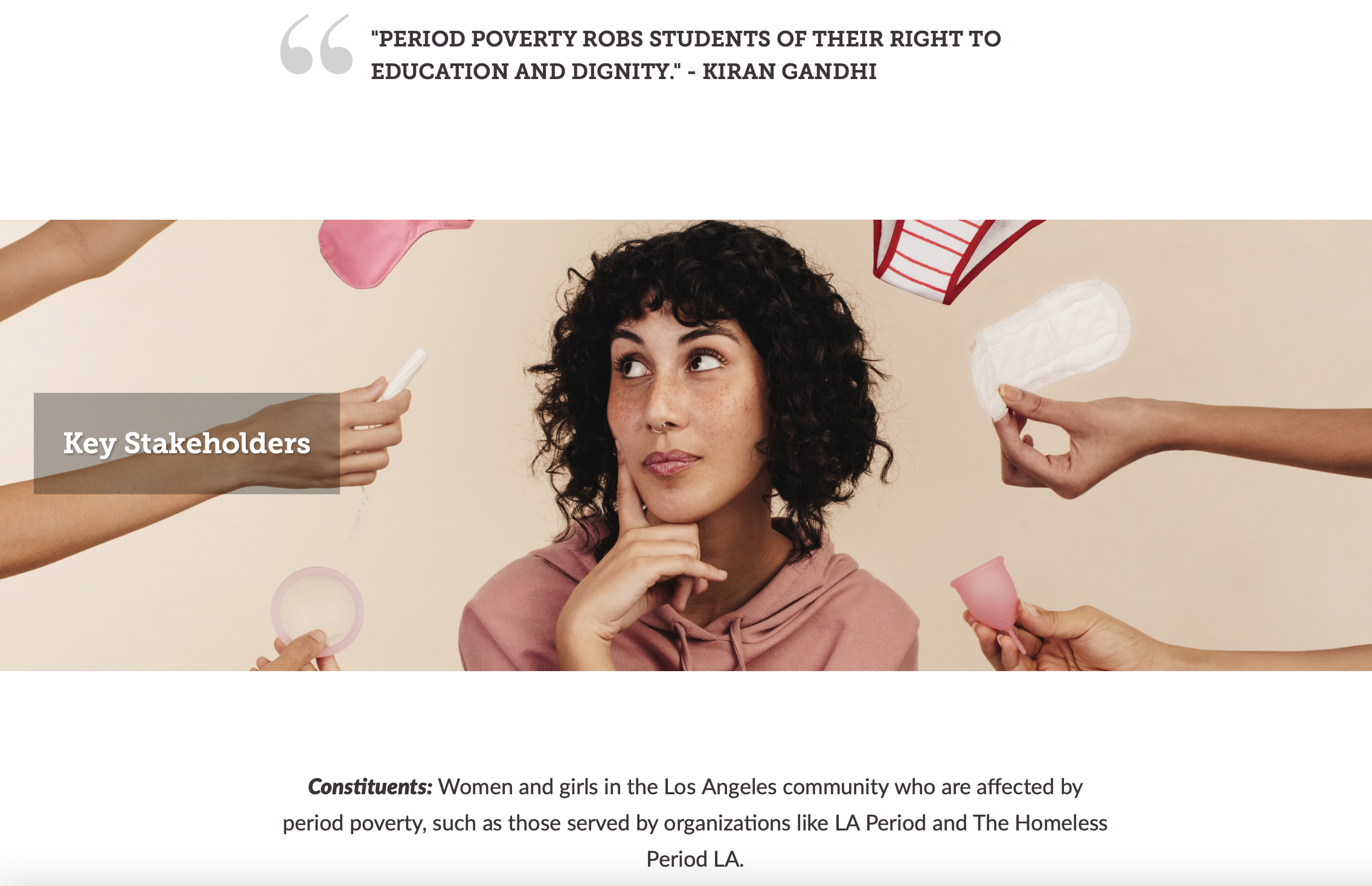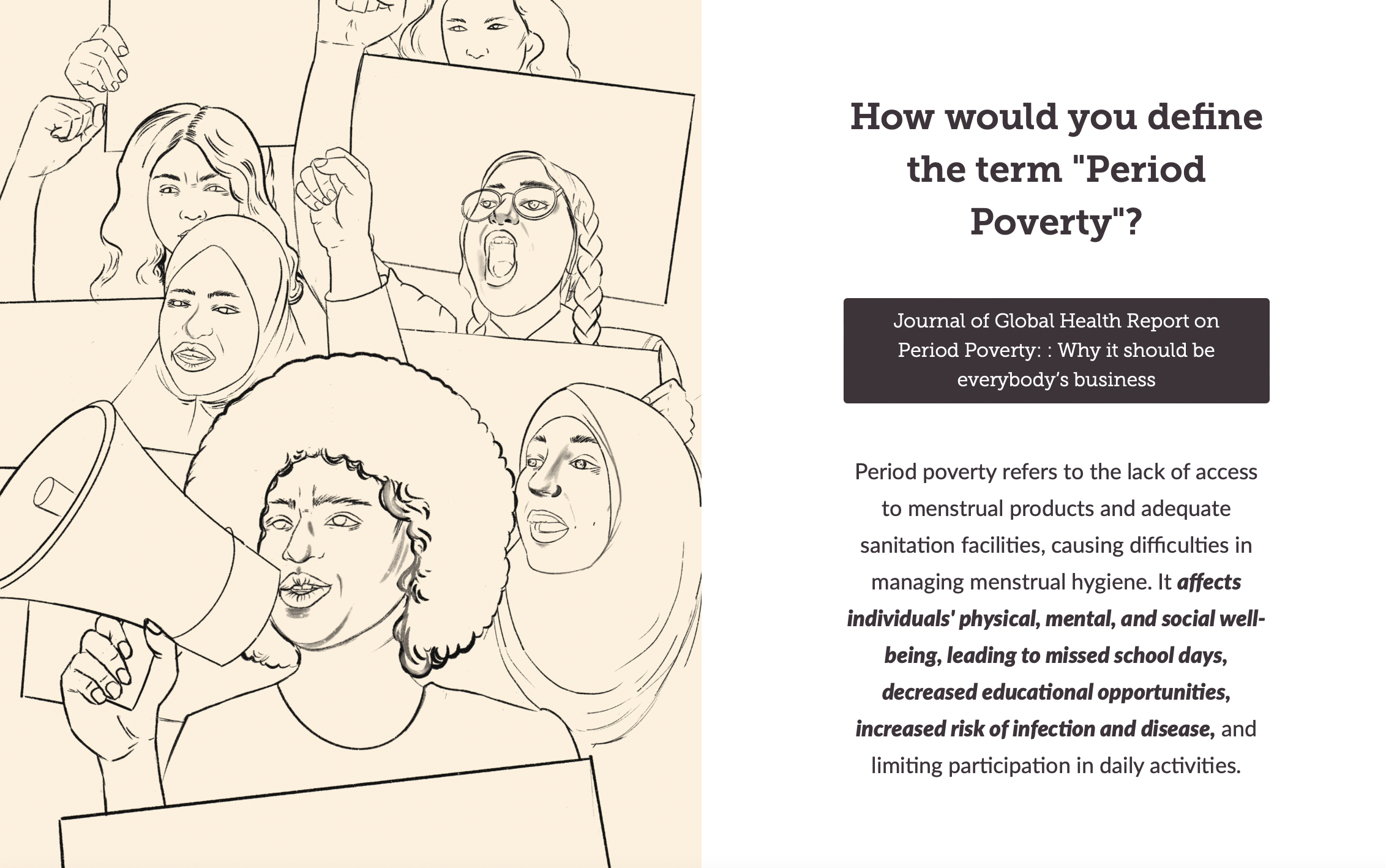Rooted Leader: CJ
Promoting Period Equity
How can we address the issue of period poverty and promote period equity, specifically in regards to access to menstrual hygiene products and education free from stigma?
CJ sought to address the issue of period poverty in her community by challenging stigma through education and breaking down barrier to accessing period products. Check out her journey!
“ I was surprised by the number of individuals who reported experiencing period poverty and the impact it has on their lives. It was challenging to collect data on a sensitive topic like menstruation, but important to give voice to those who are often marginalized.”
KEY STAKEHOLDERS
Constituents: Individuals experiencing period poverty
Including students, low-income individuals, and individuals experiencing homelessness.
Allies: Organizations aligned with the mission
Organizations and individuals who support the cause and can provide resources and assistance, including nonprofit organizations, menstrual product companies, and local businesses.
Key Decision Makers: Policy makers, school administrators, and government officials
These groups can enact change and provide funding for programs and initiatives to address period poverty. To engage these stakeholders, the project could involve outreach efforts such as social media campaigns, community events, and partnering with local organizations and businesses. It could also involve advocacy efforts such as contacting elected officials and decision makers and advocating for policy changes and funding for programs and initiatives to address period poverty. Finally, the project could involve direct service efforts such as distributing menstrual hygiene products and providing educational resources to those in need.
Check out CJ’s website that she created as part of her project as well as quotes from her community assessment:
RECOMMENDATIONS
CJ created specific recommendations for others seeking to address the issue of period poverty in their communities.
Advocate for policies that mandate free menstrual products in all public restrooms: This is a crucial step in ensuring that everyone, regardless of their socioeconomic status, has access to menstrual products. It is important to engage with decision-makers and policymakers to push for the implementation of such policies.
Educate and raise awareness about period poverty: Through education and awareness-raising campaigns, people can learn more about period poverty and its impact on individuals and communities. This can help reduce the stigma around menstruation and encourage people to take action to address period poverty.
Provide free menstrual products in schools and other public places: Many individuals, particularly students, may not have the resources to purchase menstrual products. Providing free menstrual products in schools, community centers, and other public places can help ensure that everyone has access to these essential items.
Collaborate with local organizations and businesses: Building partnerships with local organizations and businesses can help increase the impact of period poverty projects. Collaborating with local businesses to set up donation drives or with community organizations to distribute menstrual products can help reach a wider audience.
Encourage individuals to donate menstrual products: Encouraging individuals to donate menstrual products can help increase the availability of these items for those in need. This can be done through social media campaigns, community outreach, or setting up donation boxes in public places.









